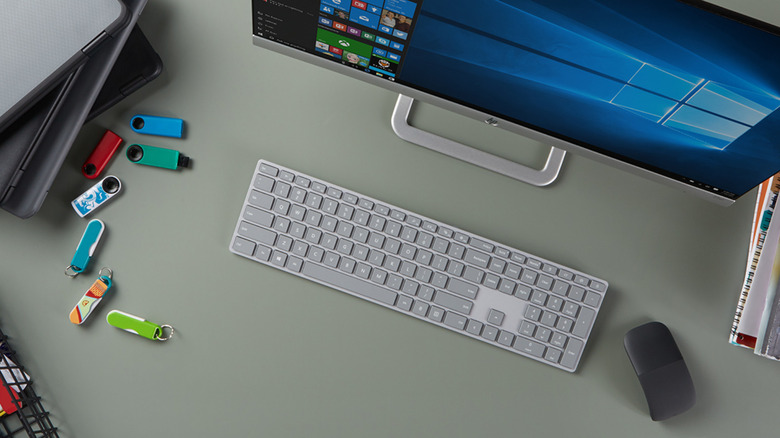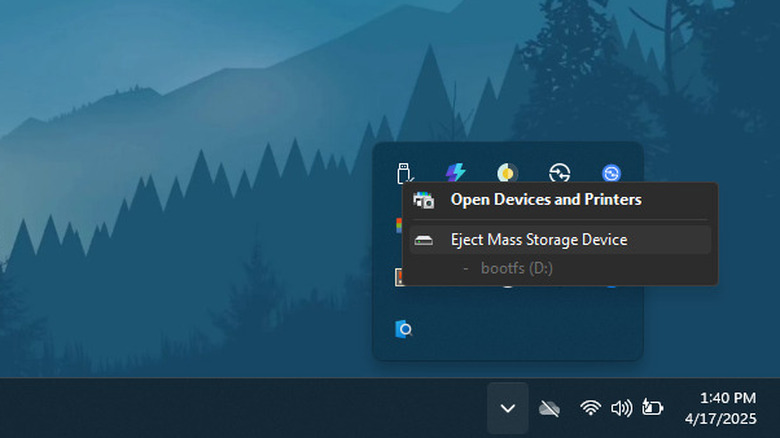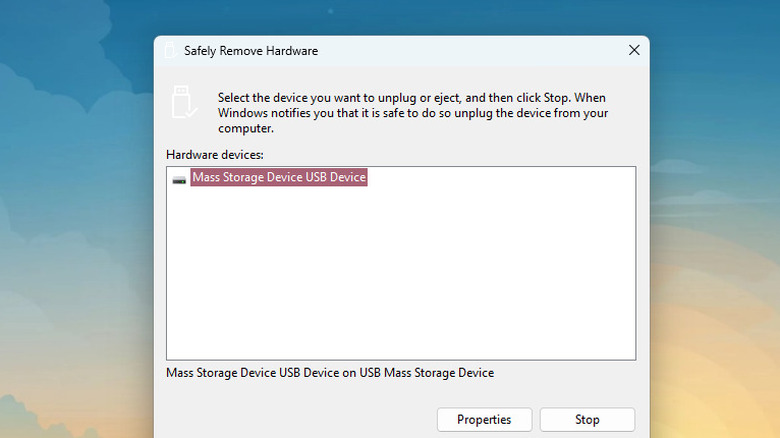How To Eject A USB Drive On Windows (And What To Do If You Can't)
Perhaps one of the most common and useful USB gadgets for PC users is a flash drive. After all, nothing can beat the convenience of having your important files easily accessible anywhere but without the hassle of carrying a heavy and bulky laptop or SSD/HDD. The thing about external drives, though, is that they can be prone to data loss or file corruption if you're not careful.
Sure, Windows is already allowing users to skip the Safely Remove Hardware process when using a USB flash drive or Thunderbolt external drive, meaning you can just unplug your drives without any consequences at any given time. This has been the default policy since Windows 10, but if you're still anxious about potentially losing your files or corrupting your drive, it's still a good idea to safely eject it from your computer before removing it. But what exactly is this safe way and what should you do if it fails?
How to safely remove an external USB drive from your PC
The quickest way to safely eject a USB flash drive from your Windows machine is from the system tray. Once you plug in your external drive, a USB icon with a checkmark in the bottom right corner will automatically appear on your system tray. All you have to do to eject the USB stick is to right-click on this icon and select Eject [device name] from the menu — that's all there is to it. You should then see a Windows Explorer pop-up on the bottom-right of your screen, saying you can now safely pull out the thumb drive.
If there's no USB icon on your system tray, click on the up arrow to expand the hidden icons panel. It might be located there instead. If the USB drive is still not showing up on your PC, try to fix it first. Then, you can add the USB icon to the system tray by following these steps:
- Right-click on an empty space on your taskbar.
- Go to Taskbar settings.
- Choose Other system tray icons.
- Find the entry for Safely Remove Hardware and Eject Media.
- Toggle it on.
- Check if the USB icon shows up on your system tray.
Besides the system tray, you can readily eject your flash drive from Settings too. Here's what you need to do:
- Navigate to Settings > Bluetooth & devices > Devices.
- Look for your USB device name under Other devices and click on it.
- Hit Remove to eject it.
Feel free to unplug the USB stick once you hear the eject sound and the drive is removed from the Other devices list.
What to do if your USB drive can't be safely ejected
While you can normally remove a USB stick from your Windows machine without a hitch, it's also not uncommon to encounter errors when ejecting it. One of the most common errors is the "device is currently in use" pop-up, which can turn up even though you're no longer editing a document on the drive or transferring files to it. To fix this issue and safely eject your flash drive, here are a few solutions to try:
- Turn off your antivirus program. It might be scanning your files and preventing Windows from safely ejecting the thumb drive.
- Sign out of Windows and log back in. Close all your applications. Then, press Ctrl + Alt + Del and select Sign out. Once you get back to the Sign in page, enter your passcode or password and try ejecting the USB stick again.
- Remove the USB drive from Disk Management. From the Start menu, search for "disk management" and select the first result that pops up. Then, right-click on the USB drive marked as Removable and choose Eject.
- Use the Run dialog tool. Hit the Windows 11 keyboard shortcut Win + R and enter "RunDll32.exe shell32.dll,Control_RunDLL hotplug.dll" (without quotes) into the dialog box. On the new window that appears, select the USB drive and click on the Stop button.
- Restart Windows Explorer from Task Manager. Open Task Manager and locate Windows Explorer (use the search bar if you have many other programs running). Click on Windows Explorer from the list and press Restart task at the top.
If all else fails, try restarting your PC. It might just be a temporary glitch.


